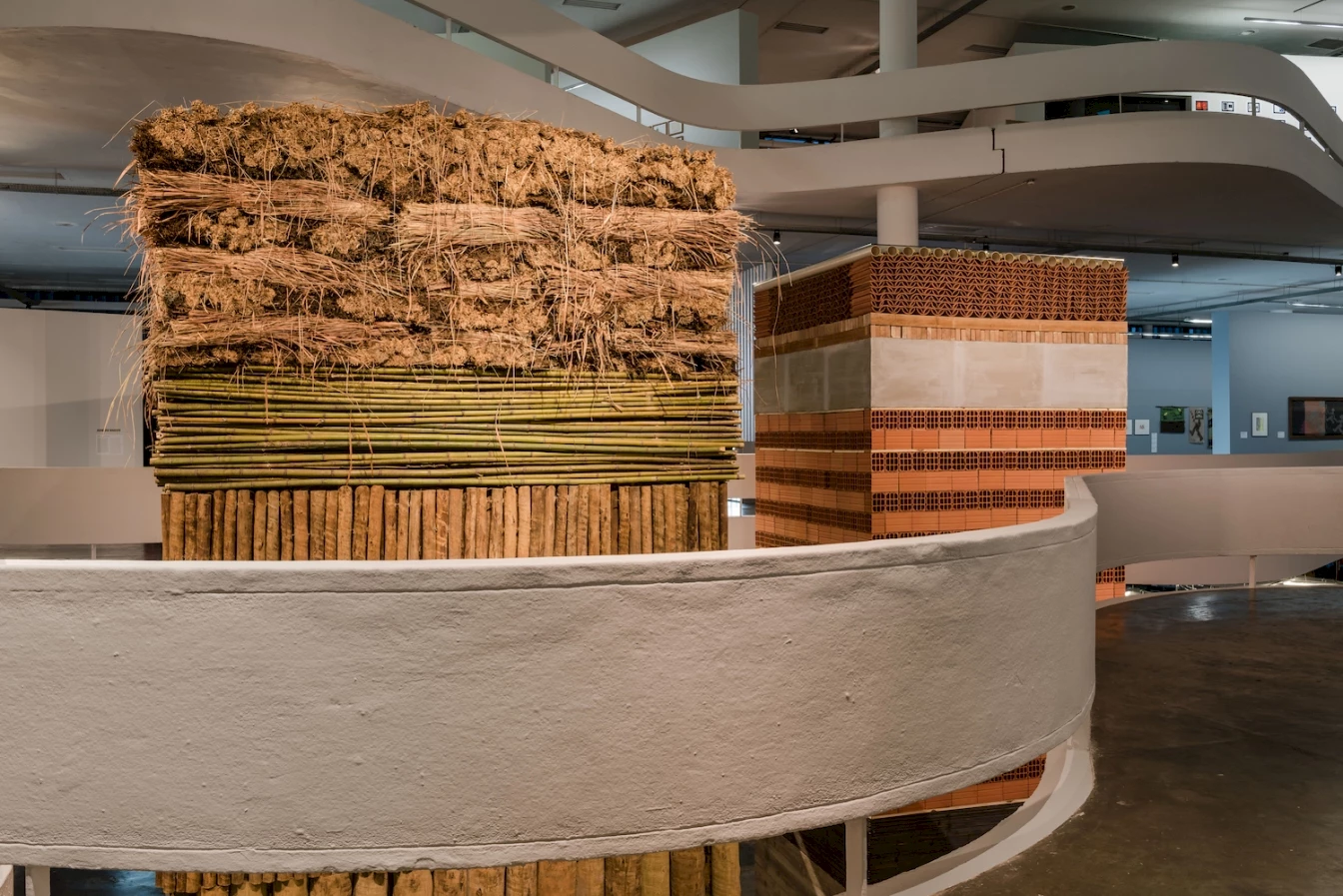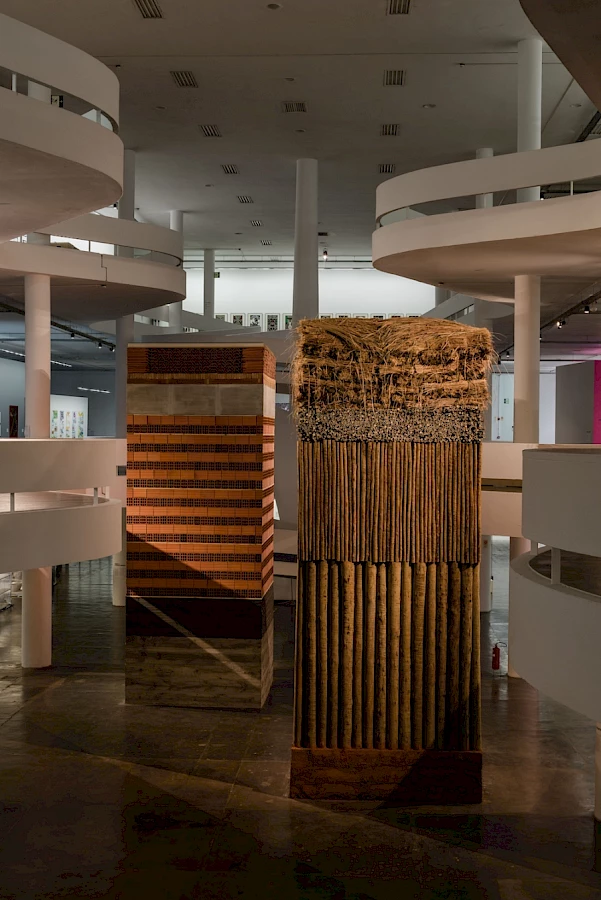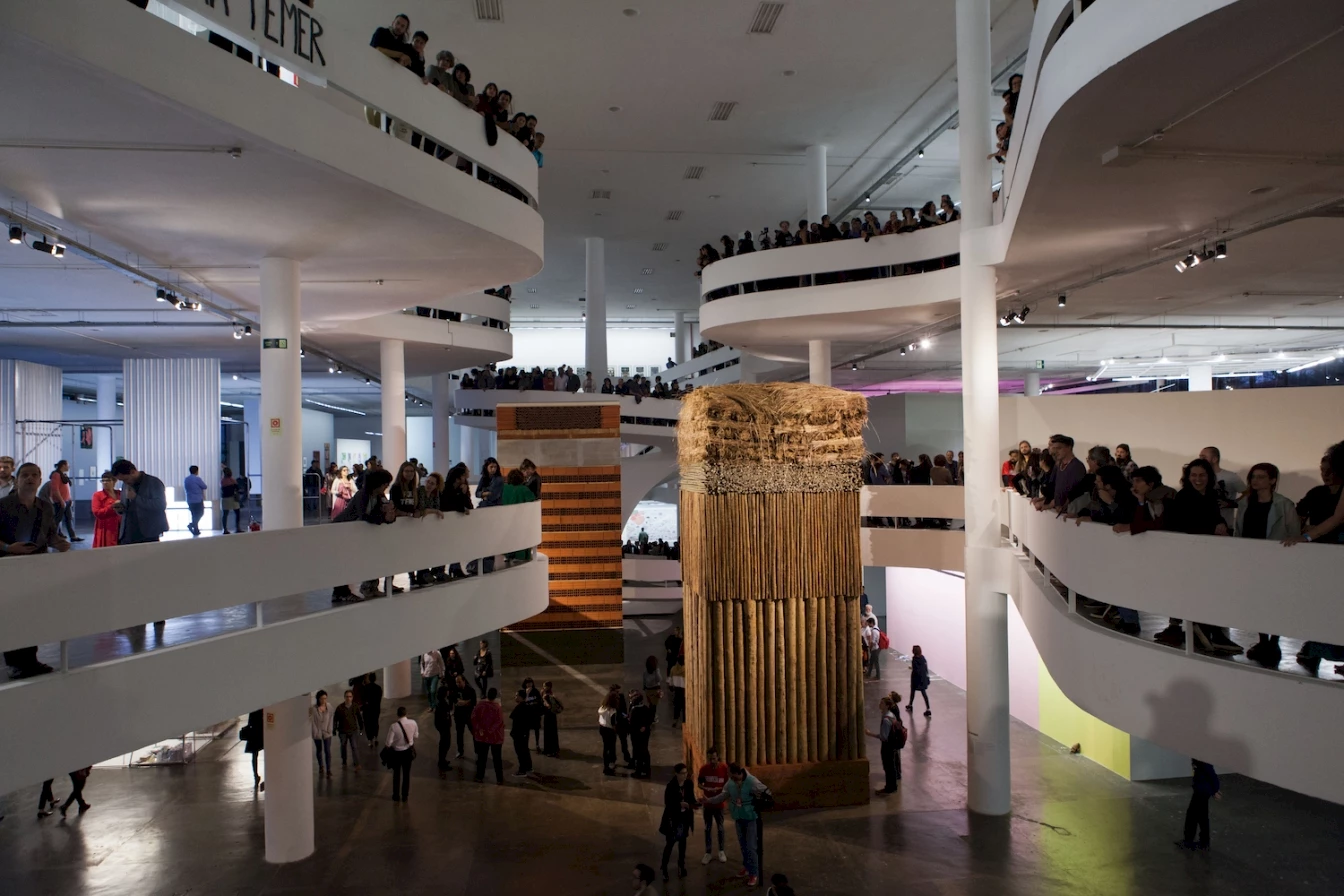
Lais Myrrha, Double Standard, 2016, woody vines, logs, straw, bricks, cement, steel, glass, pipes. Photo: Pedro Ivo Transfetti, courtesy of Fundação Bienal de São Paulo.

Lais Myrrha, Double Standard, 2016, woody vines, logs, straw, bricks, cement, steel, glass, pipes. Photo: Pedro Ivo Transfetti, courtesy of Fundação Bienal de São Paulo.

Lais Myrrha, Double Standard, 2016, woody vines, logs, straw, bricks, cement, steel, glass, pipes. Photo: Pedro Ivo Transfetti, courtesy of Fundação Bienal de São Paulo.
When I designed Double Standard for the 32nd São Paulo Art Biennial, Incerteza Viva1 (Live Uncertainty), I was thinking a lot about how the different cultures, implicit in each of the towers, were valued so unequally. Even after Benjamin, and the new historiography of the École des Annales, and so many other efforts to brush history against the grain, the most celebrated and valued cultures continue to be those capable of producing immense and numerous ruins.
There is the example of a people who lived in the Chilean territory in southern Peru, and produced mummies, about two thousand years older than the Egyptians. However, they were a people who left us very few legible traces. Studies say that they were fishermen, whose constructions were possibly more ephemeral, and lived in a society with little or no hierarchy because, it seems, everyone who died was equally mummified. Another very special story I heard from architect Paulo Tavares, who participated in the São Paulo Biennial with me, is how certain indigenous peoples in the Amazon see the forest. They are able to recognize, by the age of the trees, their distribution, the empty spaces between them, and other features that now elude me, signs of past occupations of the land. Where we see only trees and clearings, they see ruins and monuments.
Roland Barthes was right when he wrote in his book Camara Lucida, that we have, for some time now (for him since the 19th century), been living an anthropological crisis of death and, I would also add, of love. I will quote his words here:
(...)the "crisis of death" beginning in the second half of the nineteenth century; for my part I should prefer that instead of constantly relocating the advent of Photography in its social and economic context, we should also inquire as to the anthropological place of Death and of the new image. For Death must be somewhere in a society; if it is no longer (or less intensely) in religion, it must be elsewhere; perhaps in this image which produces Death while trying to preserve life.
And further on it continues:
In front of the only photograph in which I find my father and mother together, this couple who I know loved each other, I realize: it is love-as-treasure which is going to disappear forever; for once I am gone, no one will any longer be able to testify to this: nothing will remain but an indifferent nature. (RB)
Perhaps the indifferent nature does not exist, perhaps we need to relearn how to look at it and recognize its signs. Perhaps this love, whose disappearance Barthes lamented, is a trace of a dying civilization, a civilization founded on the patrimonialism that the patriarchal nuclear family so well represents and defends. Perhaps, this disappearance is not of love itself, but of the conditions necessary to make it prosper. Perhaps, for this very reason, it is good that it dies, and this does not mean that we will love our children and our parents less, but that we must learn from some peoples the meaning of loving an extended family, and the world it inhabits. We must relearn to love from those who can see trees as monuments to past civilizations.
To learn from these peoples who silently teach us that death, in order to be remembered, does not need to be under a sterile and grandiose slab of stone, nor in photographs, which produces Death while trying to preserve life, it can even be in found tenderness, subtlety, amidst life, in the middle of the verdant forest.
The views and opinions published here mirror the principles of academic freedom and do not necessarily reflect the views or positions of the L'Internationale confederation and its members.